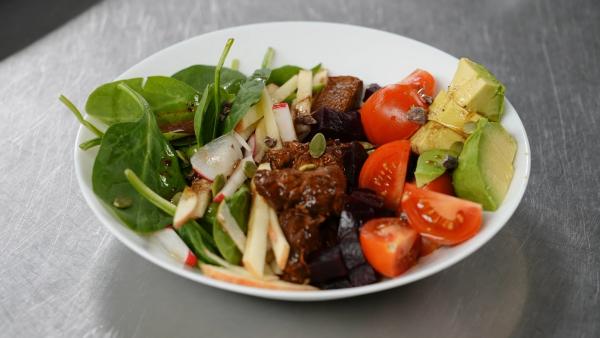Cooking with LACMA is a series where we invite chefs and culinary historians to create recipes in response to artworks at the museum. This recipe for Stains Cobb Salad by ArtBites founder Maite Gomez-Rejón, which was demonstrated at a Cooking with LACMA class earlier this year, takes inspiration from work in ED RUSCHA / NOW THEN, on view through October 6, 2024.
In the late 1960s, tired of oil painting on canvas, Ed Ruscha began experimenting with unconventional materials in his art practice. One of these experiments resulted in a boxed set of 75 single sheets of stained paper. Among the edible materials in Stains (1969) are spinach, beet, ketchup, pepper sauce, mustard, olive oil, and L.A. tap water. While stains are typically scorned, Ruscha describes the series as “a little treasure chest of overlooked things.”
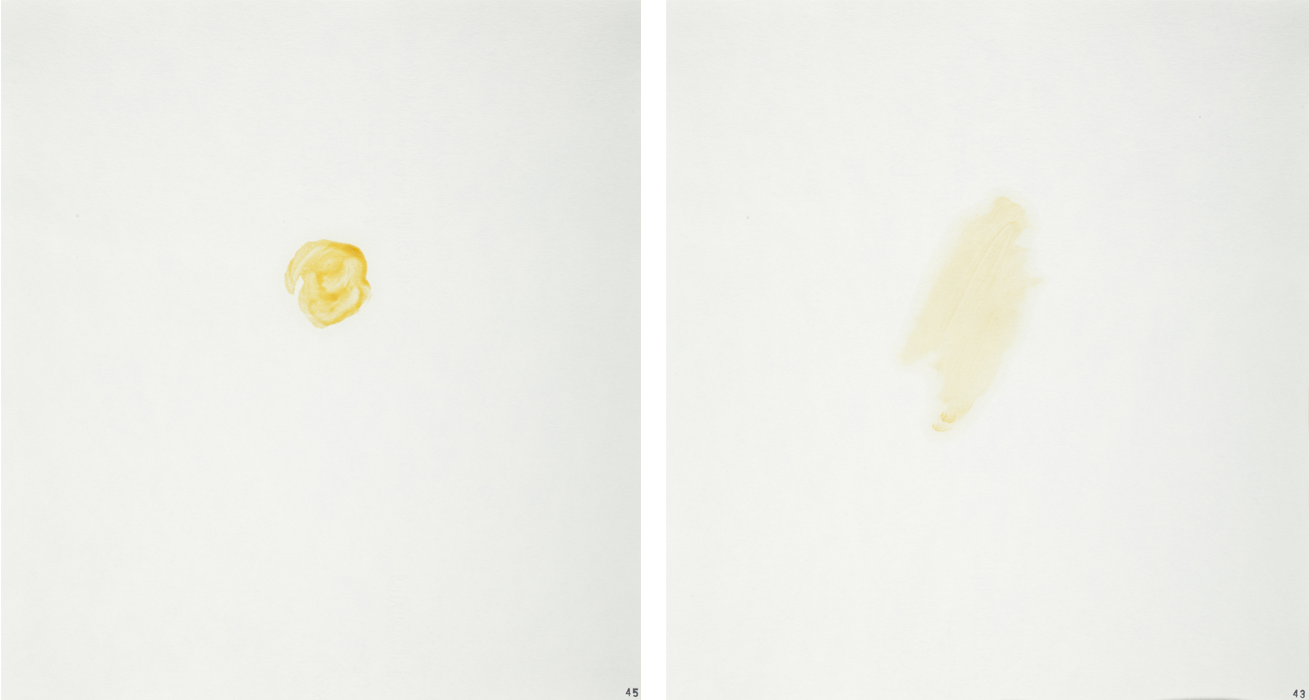
The following year, Ruscha was invited to participate in the 35th Venice Biennial. Upon arriving in Italy he scoured local supermarkets looking for new materials, settling on little metal tubes of Nestlé chocolate paste that reminded him of the tubes for his oil paints. He worked with master printer William Weege, who ran the chocolate syrup through the silk-screen process on handmade paper. The result was a room consisting of hundreds of sheets of printed chocolate hung like shingles on a house. Chocolate Room (1970/2024) has been shown seven times since 1970 and must be remade every time. Its latest installation is in ED RUSCHA / NOW THEN, where Stains is displayed right outside of its fragrant walls.
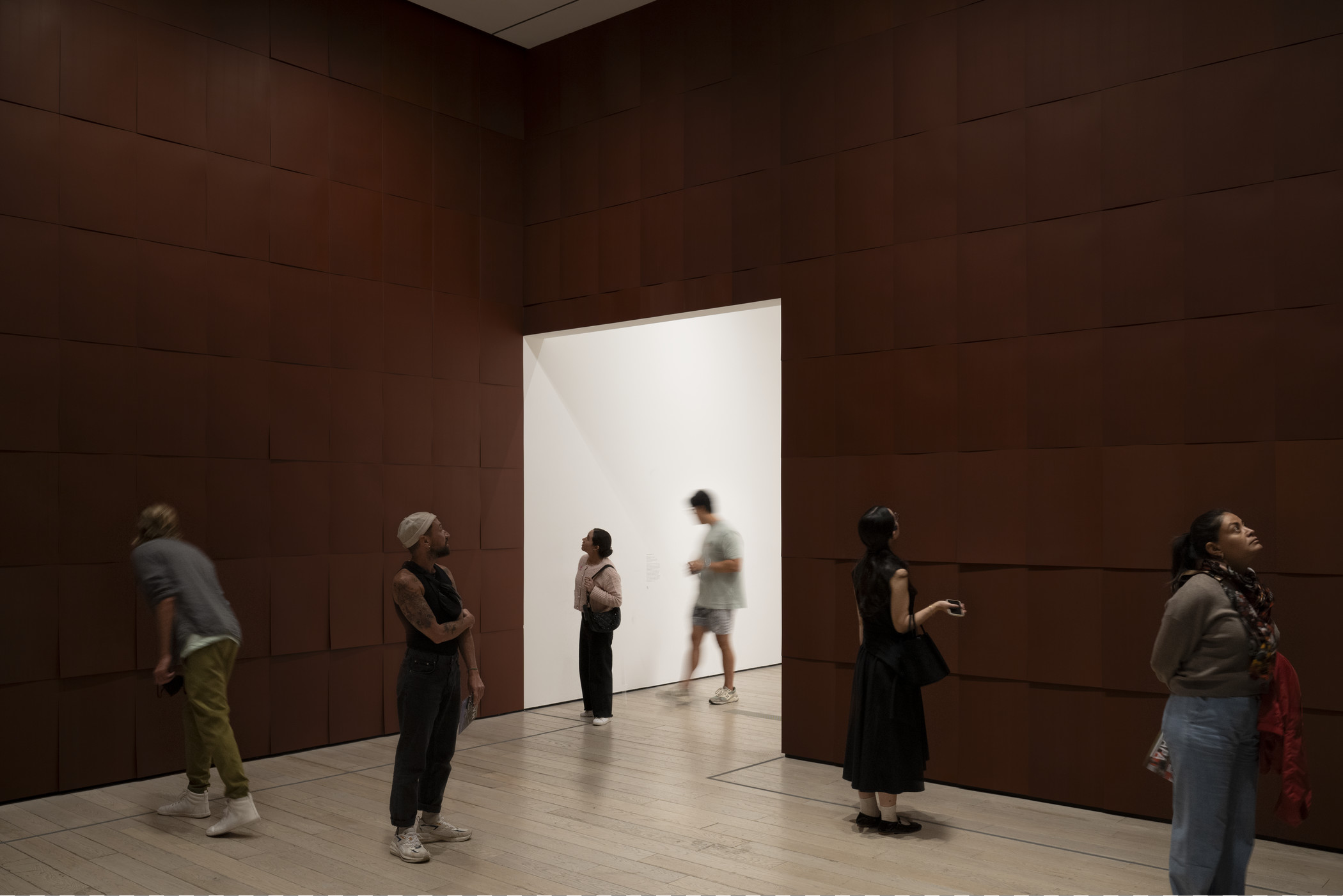
Ruscha asks viewers to look closely, then look again. Always hungry, I wondered what would happen if Stains and Chocolate Room were combined with flavors of Los Angeles, where Ruscha lives. I learned that the artist grows avocados, lemon, lettuce, and peppers at his home, where he also loves to make chili. A salad using Stains ingredients seemed appropriate. But chili?
The Cobb salad was first created in Hollywood’s Brown Derby restaurant by its owner Bob Cobb late one 1937 night. Cobb tossed leftovers of lettuce, hard boiled eggs, cheese, tomatoes, chives, and avocado together, added a few pieces of bacon, and shared them with his friend Sid Grauman (of Grauman’s Chinese Theater fame). Grauman was impressed, called it a Cobb salad, and it was added to the menu the next day.
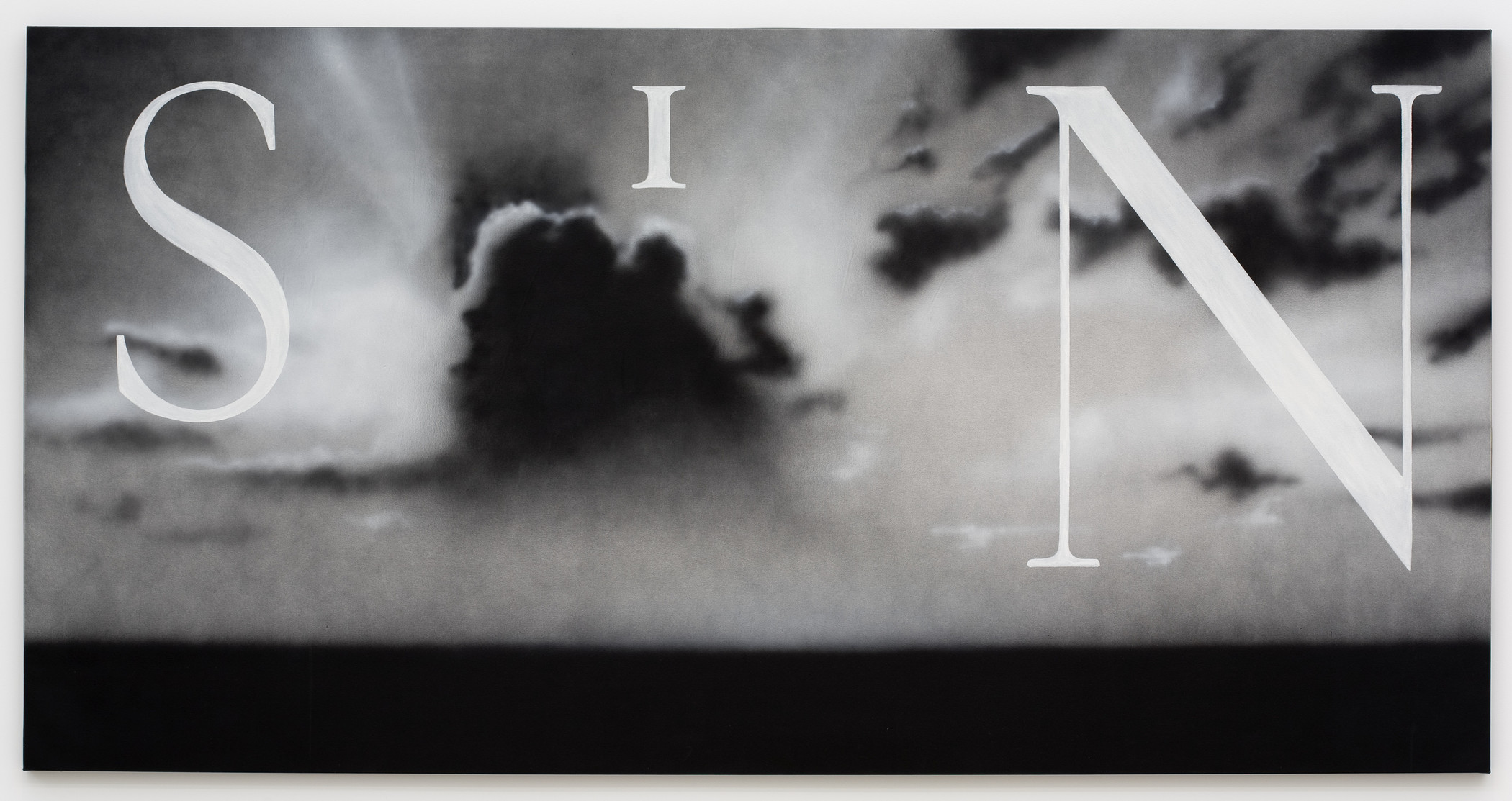
Chili is a type of mole, one of the most famous dishes in Mexico. The word mole comes from the Nahuatl mulli, meaning sauce. Modern mole blends ingredients native to the Americas—which include chocolate—with those that entered Mexico in the 16th century from Europe, Asia, and Africa. There are as many variations of mole as there are people, yet the type of mole most familiar in L.A. is the one that includes chocolate as an ingredient. Legend attributes Sor Andrea de la Asuncion, a nun working in Puebla in 1695, as being the first to add chocolate to mole. Catholic imagery is not lacking in ED RUSCHA / NOW THEN, so a shout out to a nun felt appropriate.
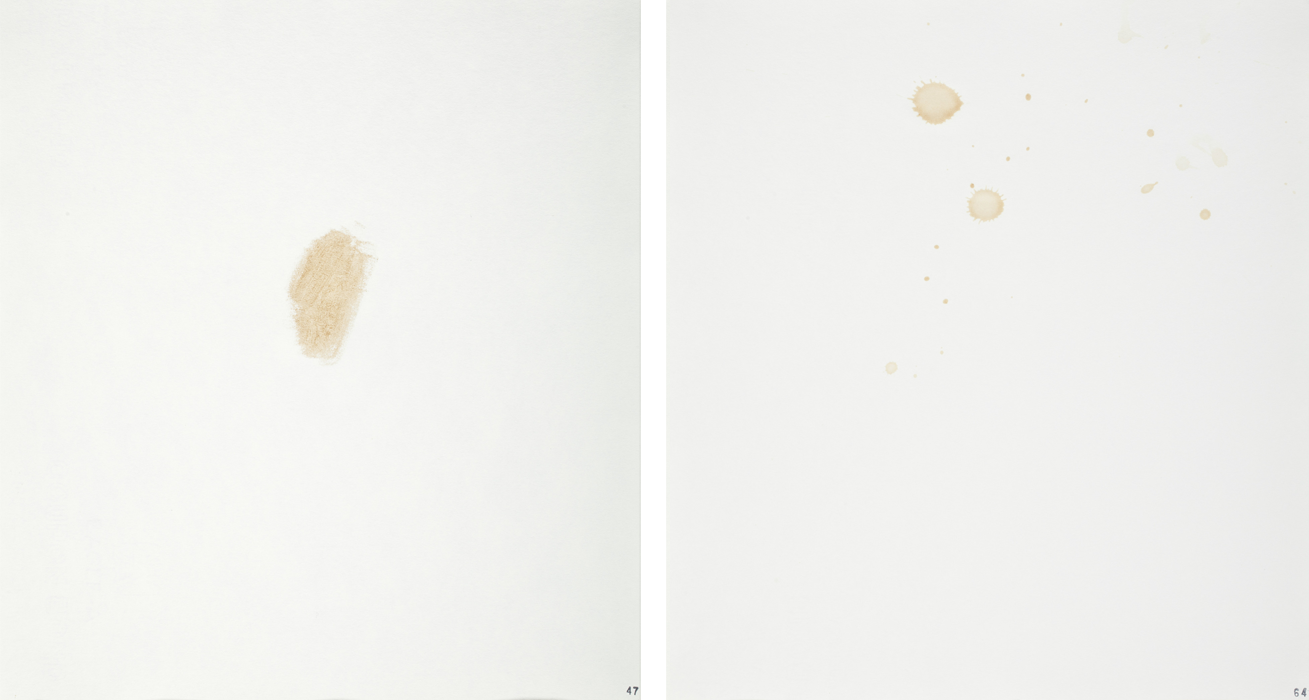
Just like Ed Ruscha’s compositions offer new perspectives on familiar sights, I invite you to do the same with this Stains Cobb Salad, a delicious composition of cultures, flavors, and histories inspired by our wonderful City of Angels.
Stains Cobb Salad
For the chicken:
- 2 skinless chicken breasts
- 1 teaspoon salt
- 1 teaspoon fresh peppercorns
- handful fresh parsley or cilantro
- 1 onion
- 1 cup water or chicken broth
For the mole*:
- 2 ancho chiles, stems and seeds removed
- 2 guajillo chiles, stems and seeds removed
- 1/2 cup toasted peanuts
- 2 tablespoons sesame seeds
- vegetable oil
- 1/2 white onion, thinly sliced
- 2 cloves garlic, peeled and smashed
- 1 corn tortilla, toasted
- 3 Roma tomatoes, halved
- 1 ripe plantain, peeled and chopped
- 1 tablespoon dried Mexican oregano
- 2 1/2 cups chicken broth
- 1/4 teaspoon ground allspice
- 1 1/2 ounce (40 grams) Mexican semi-sweet chocolate
- salt and pepper
For the salad:
- 5 cups spinach, rinsed and dried
- 3 beets
- 1 apple, thinly sliced
- 1 bunch radish
- 1 large avocado, cubed
- 2 tomatoes, halved or quartered
- handful cocoa nibs
- handful pumpkin or sunflower seeds
For the vinaigrette:
- 3 tablespoons balsamic vinegar
- 1 tablespoon Dijon mustard
- 1 teaspoon cocoa powder
- 1 garlic clove, minced
- 1/3 cup olive oil
- salt and pepper
-
Poach the chicken: Place the chicken in a large pot. Cover by an inch or so with cool water. Add salt, onion, peppercorns, and parsley. Bring to a boil over medium-high heat. As soon as the water comes to a boil, reduce the heat to low, cover, and simmer. Begin checking after 8 minutes; it is done when opaque through the middle and an instant-read thermometer in the thickest part of the meat registers 165°F. Chicken will typically finish cooking in 10–14 minutes depending on the thickness of the meat and whether or not it has a bone. Transfer the chicken from the poaching liquid to a cutting board. When cool, cut into 2-inch cubes.
-
Prepare the mole: Place the chiles in a bowl. Cover with boiling water. Let sit until fully rehydrated.
-
In a dry skillet over medium heat, individually toast the peanuts and then the sesame seeds until lightly browned and aromatic. Be careful not to burn them. Place in a blender. (If using toasted nuts, skip this step.)
-
In the same skillet, heat 1/4 cup oil over medium-high heat. Add the onions and garlic and cook until translucent and lightly browned. Remove from the oil and place in the blender with the nuts. Add the tomato halves to the same pan and cook until lightly browned. Place in the blender then add the plantains to the same hot skillet and fry for about 7 minutes or until golden brown. (You may need to add a little more oil.) Add to the blender.
-
Toast tortilla on a dry skillet or directly over flame. Add to the blender.
-
Remove the rehydrated chiles from the water and add to the blender along with the oregano and 2 cups chicken broth. Puree until smooth.
-
Wipe the skillet clean, set over medium heat, and add 2 tablespoons vegetable oil. When hot, carefully add the puree and mix well. Bring to a simmer, add the allspice, chocolate, salt, and a little pepper to taste. Add another 1/2 cup chicken broth if too thick. Add about 1 cup of mole to the reserved poached chicken and toss to coat.
-
Prep the salad ingredients: Cook the beets. Place the beets and 1 teaspoon salt in a large pot. Fill with water to cover and bring to a boil. Reduce to a simmer. Cook until fork tender, about 20–40 minutes. Allow to cool and then remove the skin under running water. Cut into cubes. Set aside.
-
Make the vinaigrette: Place all of the ingredients in a bowl and whisk until emulsified. Season with salt and pepper to taste. Thinly slice the apples and radishes and toss together. Set aside.
-
Assemble the salad: Arrange the spinach, beets, chicken mole, apple/radish slaw, tomatoes, and avocado in separate rows. Drizzle the dressing over the salad and top with sunflower or pumpkin seeds and cocoa nibs to taste.
Serves 4
*If making mole from scratch feels daunting, Oaxacan markets and restaurants in Los Angeles carry very good mole paste. If using pre-made paste, poach the chicken as described and transfer to a cutting board. Save 1 1/2 cups of the chicken broth and place in a saucepan. Add about 1 cup of mole paste, bring to a simmer, and stir until it is fully dissolved. If too watery, add more mole paste. Add the reserved chicken and toss to coat.



